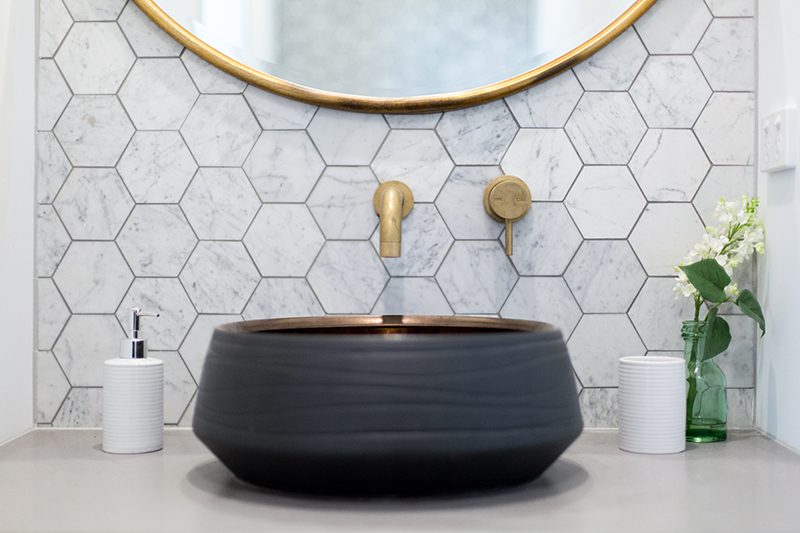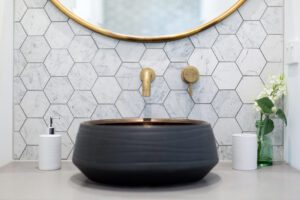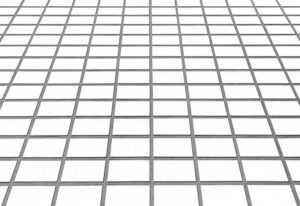A feature that many homeowners do not consider when redesigning a space is the grout color. In the home renovation world, grout color alters the finished look of the tiles by contrasting tile and grout to create interesting patterns and color palettes. It can be the difference between a tile standing out or blending into the background. Do-It-Yourself homeowners often overlook the grout color whereas professional designers utilize color to their benefit.
You can avoid mistakes and help your project stand out from others by learning a few things about grout. Let’s start by examining the three types of grout.
Three Types of Grout
Epoxy Grout
The most durable and stain-resistant type of grout is epoxy grout. It consists of a combination of epoxy resin and hardener. Great for countertops with kitchen tiles where stains are more frequent.
Sanded Grout
Sanded grout combines finely graded silica sand and cement for an incredible range of colors and reduced shrinkage. This type of grout is the best product for flooring as it can fill larger joints and form a sturdy joint that can withstand most home use.
Unsanded Grout
Excellent product for use in any joints less than ⅛”-wide, unsanded grout is made with a mixture of cement, powdered pigments, and water. This grout is exceptionally sticky and perfect for working on vertical surfaces. Surfaces that scratch easily such as glass are ideal projects for unsanded grout as it will not scratch.
Grout Color Options-
Now that you know a little about the different types of grout let’s discuss color options. Grout comes in an array of colors, everything from ice white to black onyx. Depending on what you are doing, the color will help the tiles blend in or stand out. Home designers often use coloring in the grout to make a statement.
Contractors create interesting, fun effects by using smaller tiles like hexagons subway tiles paired with a fun grout color. Notice in the pictures below. One style has tiles where the grout is colored dark, making the tiles stand out into a statement piece, whereas the other photo shows the tiles blending in with white tiles and white grout.
There are many options to choose from when choosing the grout you want for your project. Here are a few final tips to remember when meeting with your designer:
- White grout with white tile results in a uniform aesthetic that is thoroughly blended. The lines will virtually disappear when you look at them. This option appears very modern; however, it will take some upkeep and care due to staining issues.
- Light tiles and dark grout are perfect if you want the tile to stand out. This contrast allows for the shape and design of the tile to pop.
- Dark tile and light grout, this combination focuses on the tile making it stand out.
- Dark tile and dark grout will give you a softer effect. The harshness of the tile, when blended with the darker grout, pulls away from the shapes of the tile.
Grout Size
Finally, we arrive at grout sizing. When designing your renovation, you want to determine whether you want thin grout lines, thicker grout lines, or something in the middle. Factors that help determine the size of the grout lines are function, type of tile, and the final aesthetic goal. Your High Quality Contracting, Inc. design specialist can help you determine the width that will work best for your space.
If you are interested in looking at some excellent tile products, we welcome you to contact us today for a free home estimate. Products and styles often change. Meeting with one of our professionals will assure you get the newest options.





